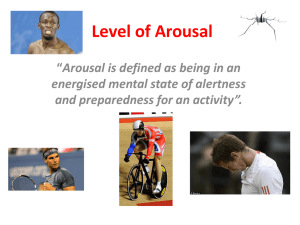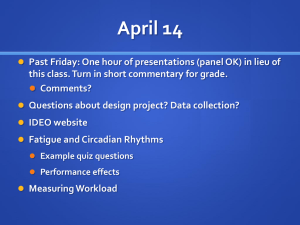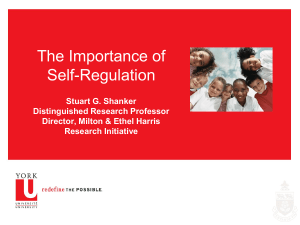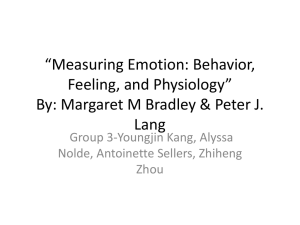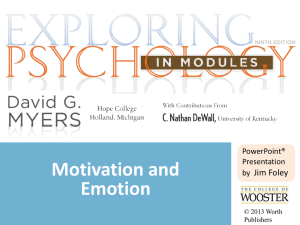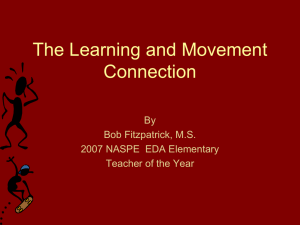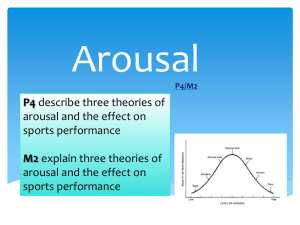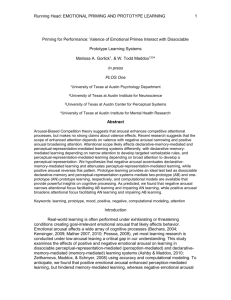Lecture 3
advertisement
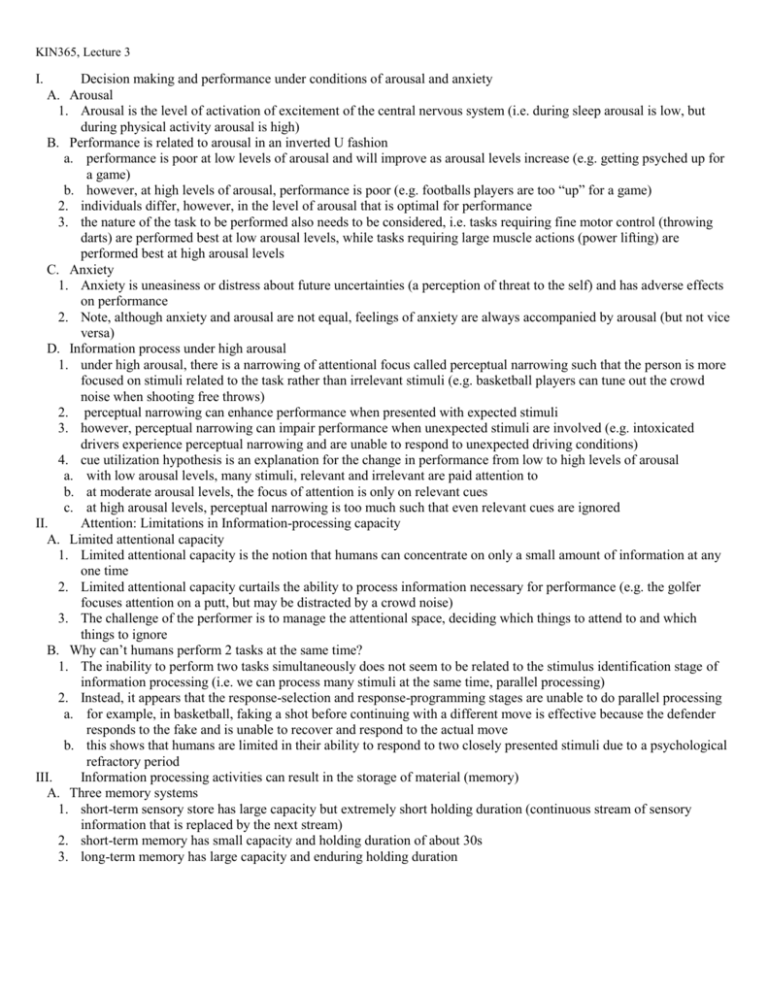
KIN365, Lecture 3 I. Decision making and performance under conditions of arousal and anxiety A. Arousal 1. Arousal is the level of activation of excitement of the central nervous system (i.e. during sleep arousal is low, but during physical activity arousal is high) B. Performance is related to arousal in an inverted U fashion a. performance is poor at low levels of arousal and will improve as arousal levels increase (e.g. getting psyched up for a game) b. however, at high levels of arousal, performance is poor (e.g. footballs players are too “up” for a game) 2. individuals differ, however, in the level of arousal that is optimal for performance 3. the nature of the task to be performed also needs to be considered, i.e. tasks requiring fine motor control (throwing darts) are performed best at low arousal levels, while tasks requiring large muscle actions (power lifting) are performed best at high arousal levels C. Anxiety 1. Anxiety is uneasiness or distress about future uncertainties (a perception of threat to the self) and has adverse effects on performance 2. Note, although anxiety and arousal are not equal, feelings of anxiety are always accompanied by arousal (but not vice versa) D. Information process under high arousal 1. under high arousal, there is a narrowing of attentional focus called perceptual narrowing such that the person is more focused on stimuli related to the task rather than irrelevant stimuli (e.g. basketball players can tune out the crowd noise when shooting free throws) 2. perceptual narrowing can enhance performance when presented with expected stimuli 3. however, perceptual narrowing can impair performance when unexpected stimuli are involved (e.g. intoxicated drivers experience perceptual narrowing and are unable to respond to unexpected driving conditions) 4. cue utilization hypothesis is an explanation for the change in performance from low to high levels of arousal a. with low arousal levels, many stimuli, relevant and irrelevant are paid attention to b. at moderate arousal levels, the focus of attention is only on relevant cues c. at high arousal levels, perceptual narrowing is too much such that even relevant cues are ignored II. Attention: Limitations in Information-processing capacity A. Limited attentional capacity 1. Limited attentional capacity is the notion that humans can concentrate on only a small amount of information at any one time 2. Limited attentional capacity curtails the ability to process information necessary for performance (e.g. the golfer focuses attention on a putt, but may be distracted by a crowd noise) 3. The challenge of the performer is to manage the attentional space, deciding which things to attend to and which things to ignore B. Why can’t humans perform 2 tasks at the same time? 1. The inability to perform two tasks simultaneously does not seem to be related to the stimulus identification stage of information processing (i.e. we can process many stimuli at the same time, parallel processing) 2. Instead, it appears that the response-selection and response-programming stages are unable to do parallel processing a. for example, in basketball, faking a shot before continuing with a different move is effective because the defender responds to the fake and is unable to recover and respond to the actual move b. this shows that humans are limited in their ability to respond to two closely presented stimuli due to a psychological refractory period III. Information processing activities can result in the storage of material (memory) A. Three memory systems 1. short-term sensory store has large capacity but extremely short holding duration (continuous stream of sensory information that is replaced by the next stream) 2. short-term memory has small capacity and holding duration of about 30s 3. long-term memory has large capacity and enduring holding duration
